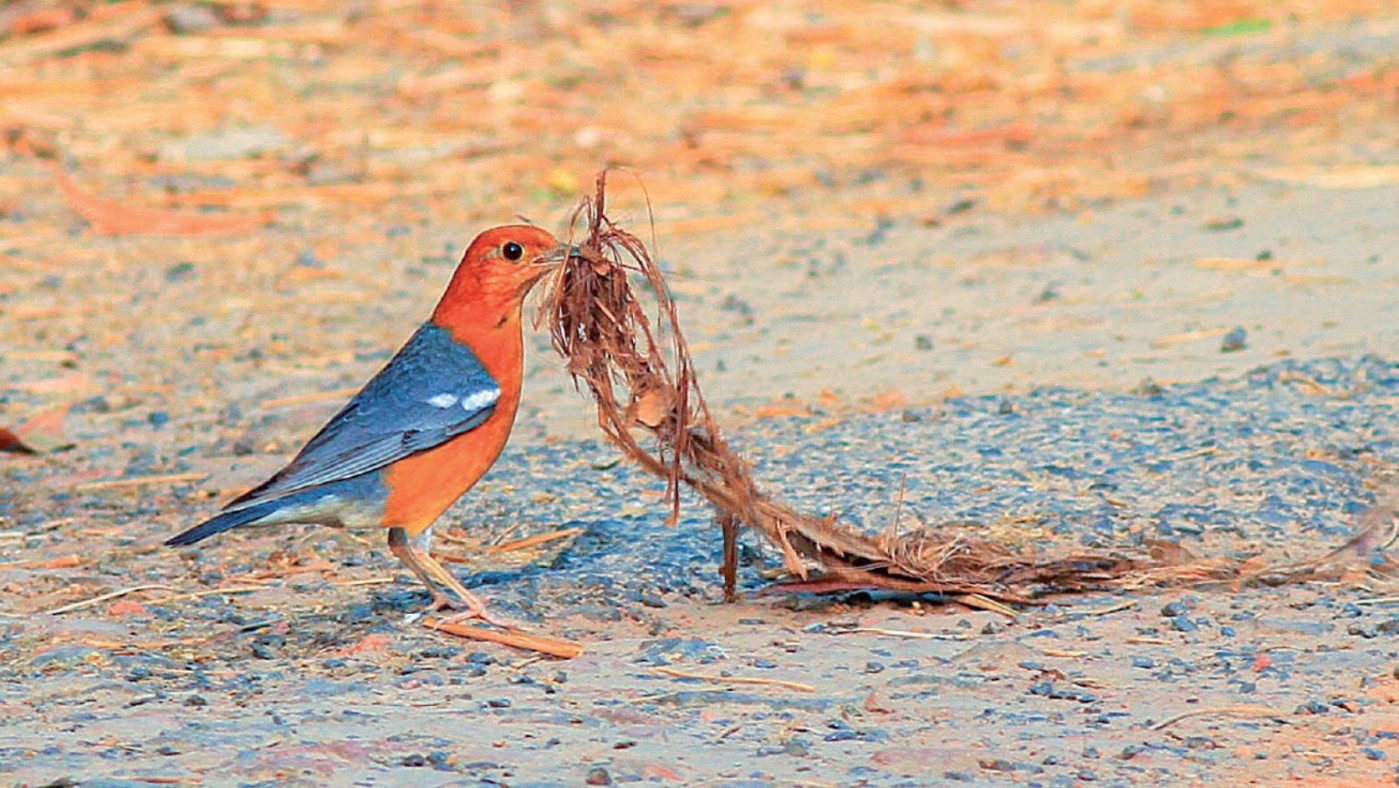Tuhin Sarwar:
Seeing these names in the newspaper, sometimes there was constructive feedback, and sometimes there was criticism. An elderly man once came and sternly told me, Why are you giving birds names like ‘Kala’ and ‘Dhola’?
What are these names?
Inam Al Haque’s lifelong dream was to compile a book containing the names, pictures, and information of all the birds of Bangladesh, with the names being in Bengali. In 1995, while writing regular features about birds for the newspaper, he noticed two things: some birds had multiple names (for example, the Common Myna is called ‘Kubo,’ ‘Aira,’ ‘Kuiro’) and most birds had no names at all! It turned out that some names in Bengali had been given by Salim Ali, the author Bonoful, Ajay Home, and Dr. Reza Khan. But even when combined, these names did not exceed 250, and there were various problems, particularly that the bird families could not be identified from the names. For example, ‘Tila Baza’ was a type of eagle, so the name was misleading regarding the bird’s type.
He then began the arduous task of compiling names himself,
gathering names of birds from English and French sources. His hobby of collecting names of various birds and trees had started much earlier; for instance, in 1979, he had seen an unfamiliar tree in Chittagong and heard its name from a local, which he noted down as ‘Nochhin’!
This led to widespread laughter among colleagues because ‘Nochhin’ means ‘I don’t know’ in Bengali. Similarly, when he showed a bird known as the ‘Khanjan,’ a villager had said it was called ‘Baui,’ meaning ‘Babui’ (a type of bird). Later, names from Dutch, Finnish, and other languages were added to his collection.
Observing naming conventions, he decided that the names should be descriptive and, as much as possible, use local traditional names. For instance, two types of crows are found in Bangladesh: ‘Paticak’ and ‘Dharakak,’ where ‘Pati’ means small, so the name itself is descriptive.
He also added ‘Benghalensis’ to the names of 11 birds, placing ‘Bangla’ at the beginning, such as ‘Bangla-Shakun’ and ‘Bangla-Kaththokora.’
When naming birds after people, the names were kept unchanged, and for those with ‘Indian’ in their names, ‘Deshi’ was used instead. Some words had to be coined out of necessity; for example, ‘Oriental’ was used to denote birds from a large region extending from Japan to Iran. Thus, ‘Oriental’ became ‘Udayi’ (rising) in Bengali. Efforts were made to give names in two words, with the second word indicating the bird’s species.
Inam Al Haque aimed to provide accurate descriptive names,
as done in many languages, ensuring the names would be enduring. Descriptions of body shape, head color, wing size, and family names were included. Earlier, some names were poetic but failed to indicate the bird’s family or provide other useful information, so those names faded away. For example, ‘Neelapori’ (blue fairy) was a beautiful name for a bluebird but did not convey much about the bird’s characteristics, so it was not lasting
When naming eagles in Bangladesh, it was found that both ‘Snake Eagle’ and ‘Serpent Eagle’ existed, so the ‘Snake Eagle’ was named ‘Sap-Eagle’ and the ‘Serpent Eagle’ was named ‘Nag-Eagle,’ resulting in the correct name ‘Tila Nag-Eagle’ for the Tila Baza.
Naming herons posed significant problems since Bangladesh has several species of herons including egrets, herons, and bitterns. Egrets or white herons were named ‘Boga,’ and colorful herons were named ‘Haron,’ but finding a distinct name for bitterns was challenging. Eventually, the name ‘Bogla’ (a popular cigarette) was borrowed from the past.
Feedback on these names often included both constructive criticism and adverse comments. An elderly man once rebuked him for using names like ‘Kala’ and ‘Dhola,’ to which Inam Al Haque responded that in Bangladesh, names based on colors like ‘Kala Miah’ (black) or ‘Dhola Miah’ (white) were common, but there were no ‘Sada Miah’ or ‘Kala Miah’ names. Thus, ‘Mete’ (grey) was used instead of ‘Dhuser.’
For birds with patterns, such as ‘Pied’ or ‘Pied’ in English, the name ‘Pakra’ was used, and ‘Dagi’ for spotted birds, as the term ‘Dagi’ originally referred to marking criminals. For owls, names were given based on their characteristics, such as ‘Hutom-Pyaacha’ for Eagle Owls, ‘Nim-Pyaacha’ for Scops Owls, ‘Kuti-Pyaacha’ for small Owlets, ‘Gachh-Pyaacha’ for Wood Owls, and ‘Shikore-Pyaacha’ for Hawk Owls. Woodpeckers were named based on regional variations, like ‘Haldha-Kurali’ for Yellow-naped Woodpeckers and ‘Kuti-Kurali’ for Piculets. Cuckoos were named ‘Kokil’ for Koels, ‘Papia’ for other cuckoos, and ‘Chokh-Gyalo’ for Hawk Cuckoos. The Drongo Cuckoo was named ‘Finge-Papia.’
Naming raptors caused extensive confusion. The popular name ‘Rakhhan-Bhulani’ was found to be used for all soaring birds, so separate names were given according to their families. All Falcons were named ‘Shaheen,’ with ‘Tika-Shaheen’ for Hobbys and ‘Kestrel’ for Kestrels. ‘Baza’ was used for buzzards, ‘Tisa-Baz’ for buzzards, ‘Madhubaz’ for honey buzzards, and ‘Kapasirakh’ for Harriers. Some bird names included ‘Paan’ (water), like ‘Paan-Kaori,’ ‘Paan-Chil,’ and ‘Paan-Kapasirakh.’
Eventually, the book containing information and pictures of all the birds of Bangladesh was published by the Asiatic Society of Bangladesh in the 26th volume of the ‘Encyclopedia of Plants and Animals’ first in English and then in Bengali in August 2009. In 2012, most of the Bengali names were taken from this ‘Bird Encyclopedia’ for the Bangladesh Wildlife Conservation Act. The Bengali names were also used in the ‘Field Guide to Birds of Bangladesh’ published in 2015.
While names for 12,000 bird species exist in various languages,
Bengali names for the thousands of birds in the subcontinent have not yet been fully provided. Creating descriptive names is extremely challenging. Inam Al Haque continues to work on naming all the birds of the world in Bengali, and we hope that one day, it will be possible to name every bird in Bengali



